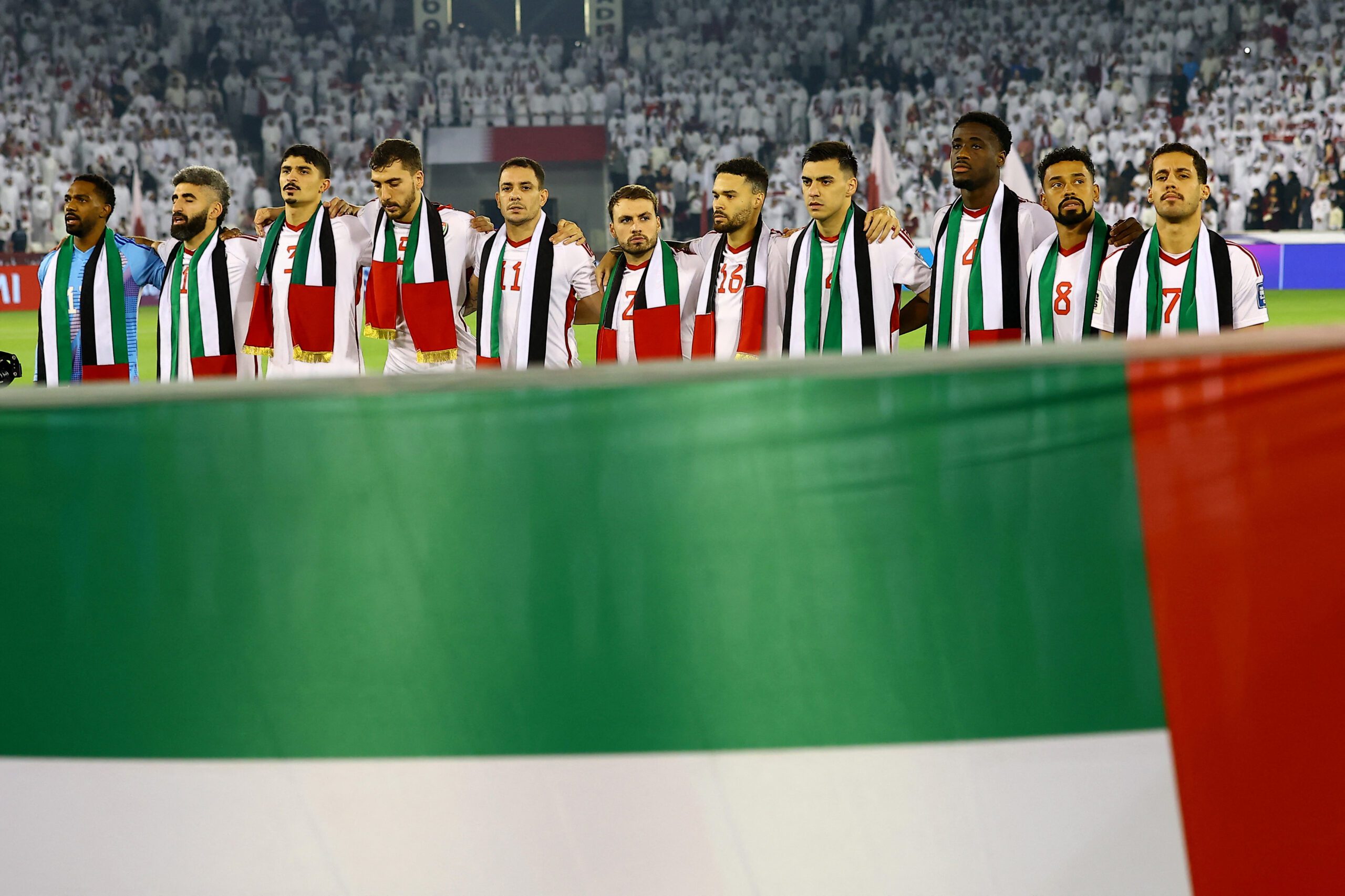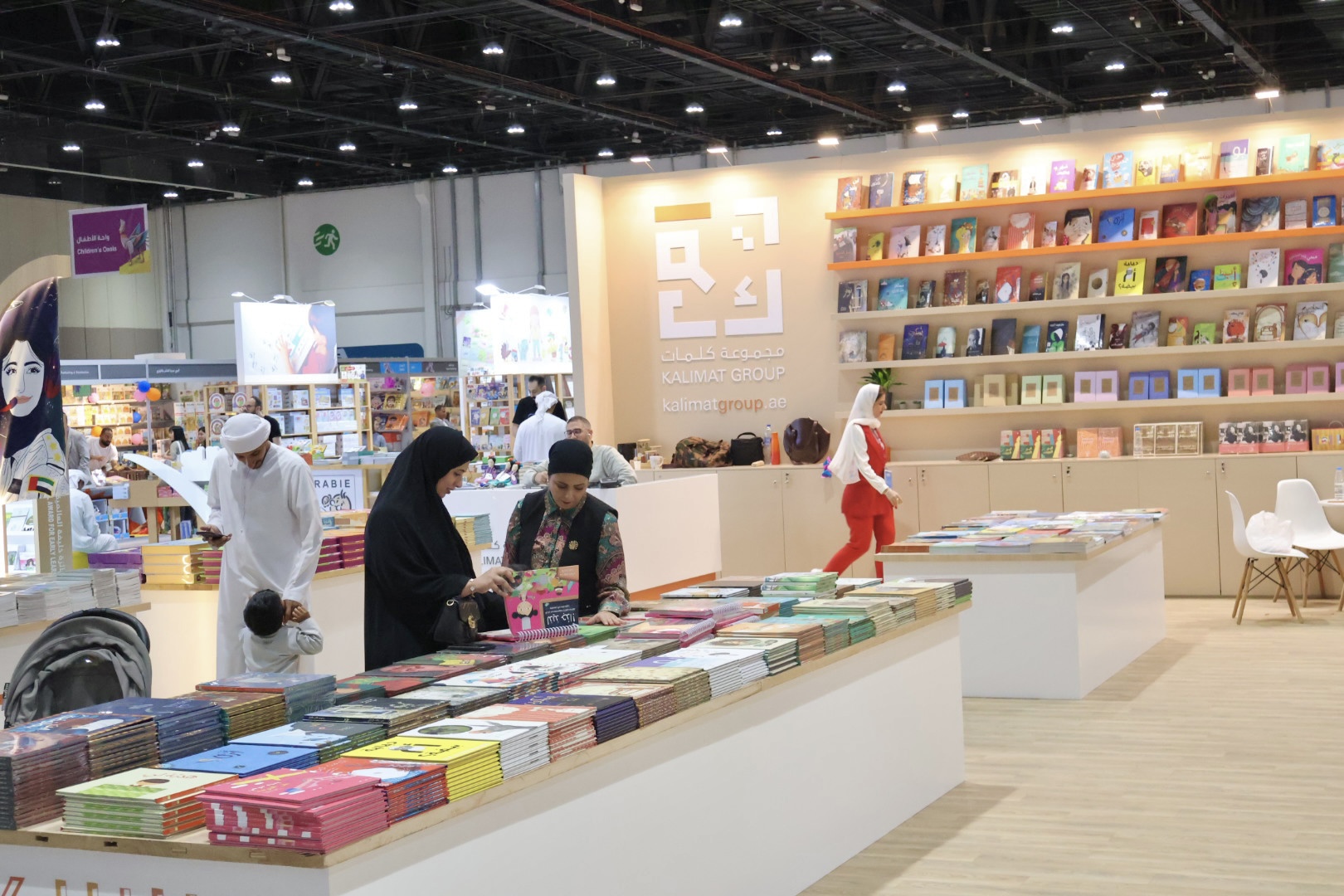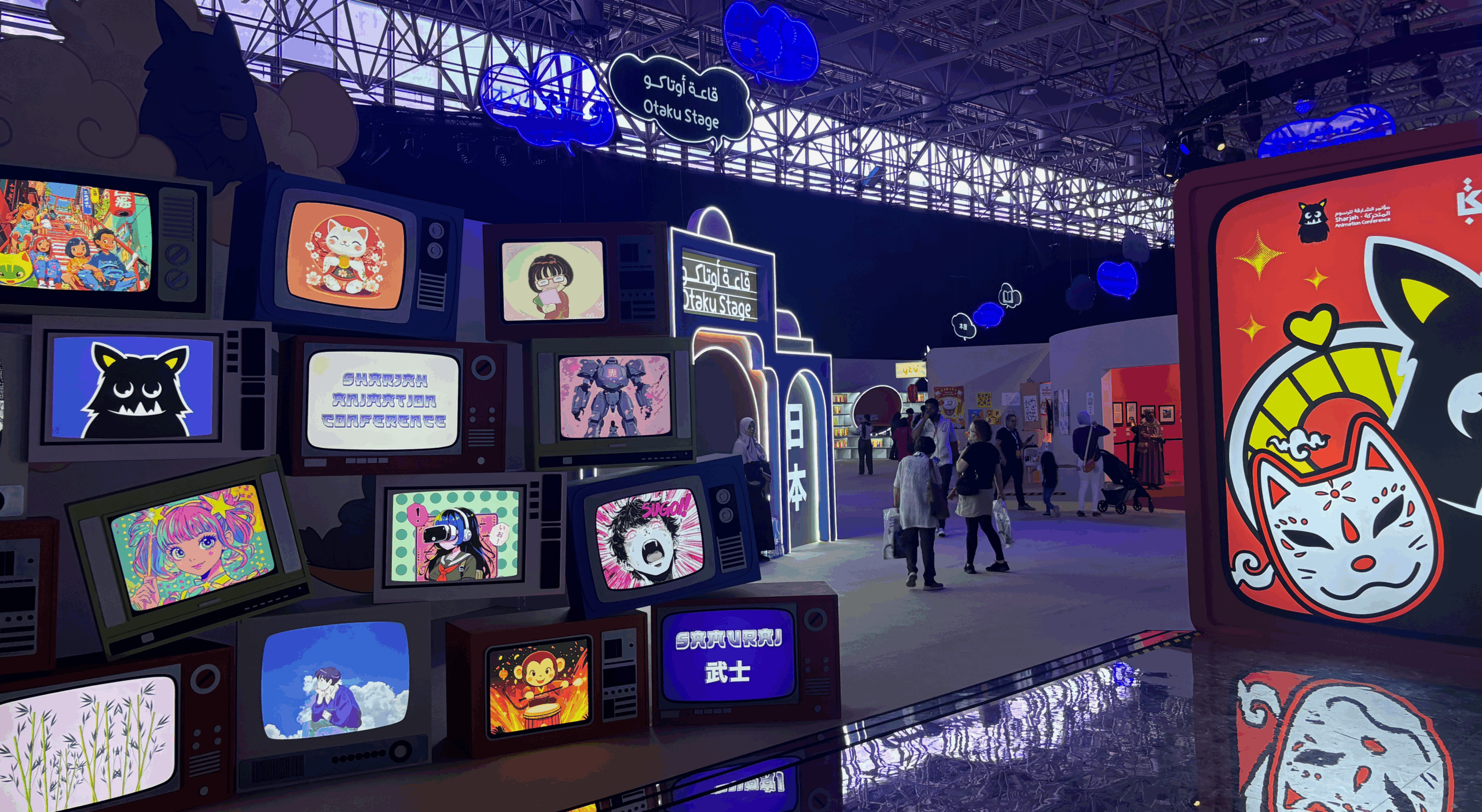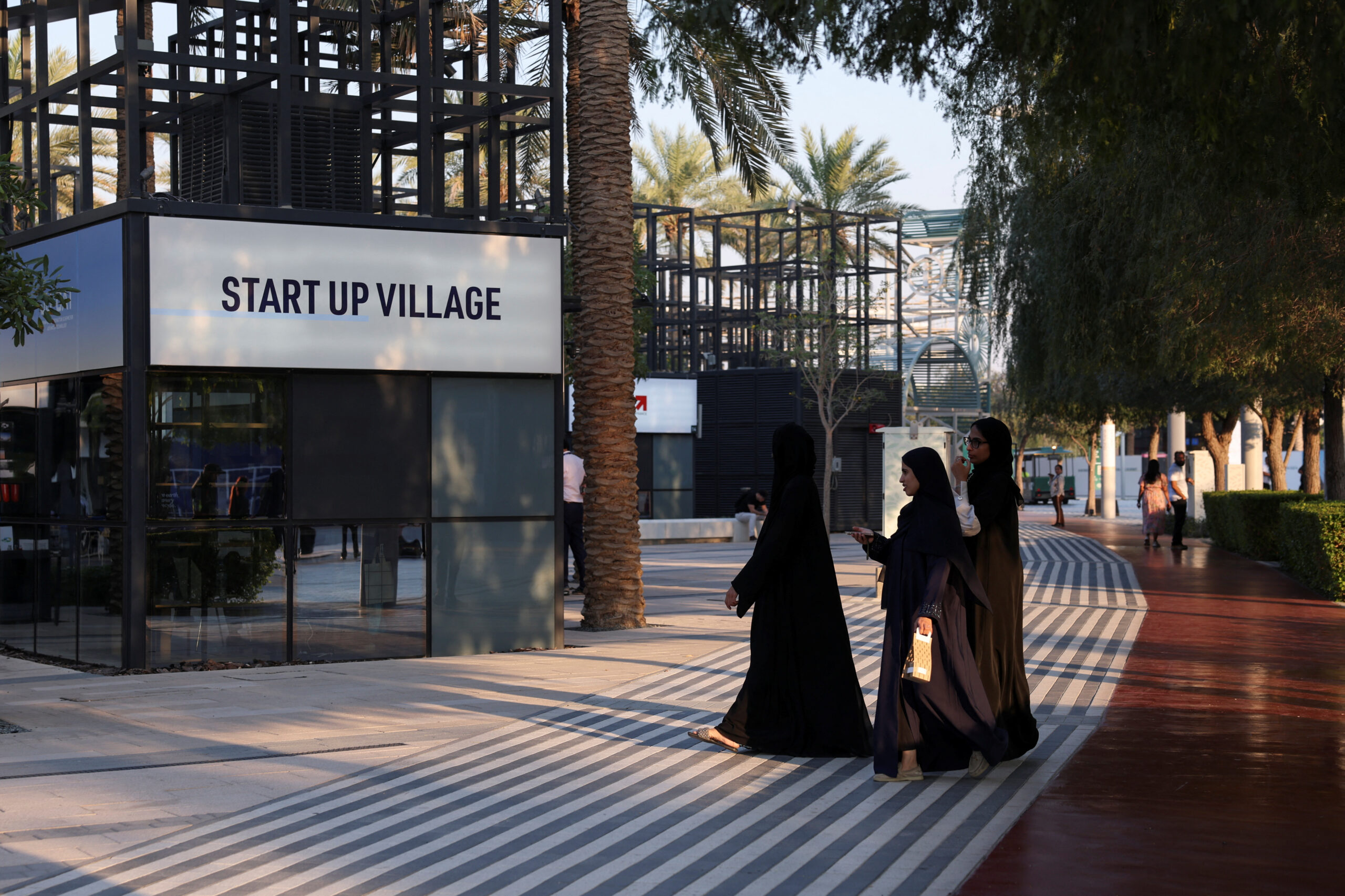Panaderias Bring a Taste of the Philippines to the UAE
Filipino migrants play important roles in the Emirati economy and culture, with Filipino cuisine particularly shaping everyday experiences for residents across the country.
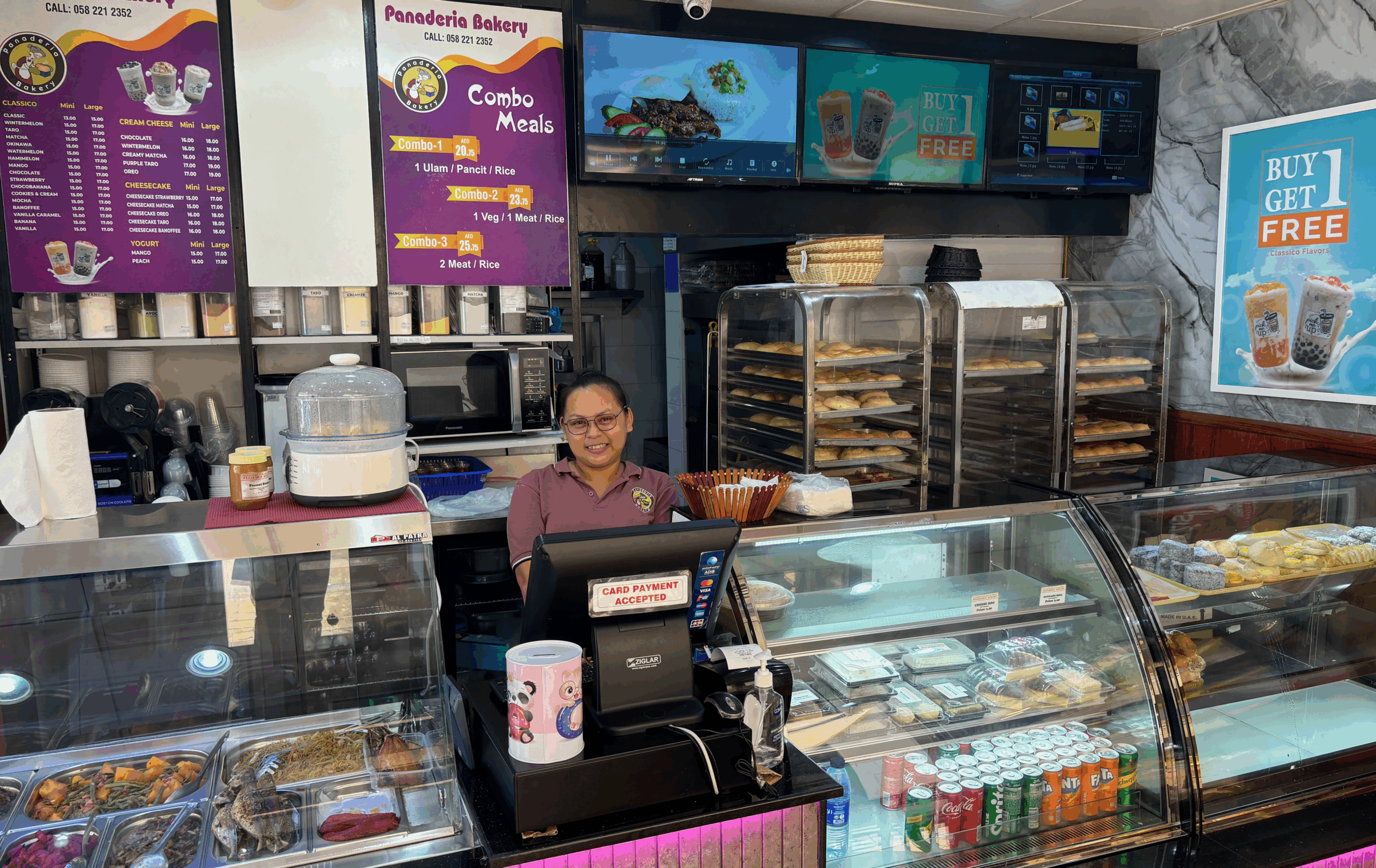
For visitors to the United Arab Emirates, it might be surprising to find small cafés dotting the city with the name “Panaderia,” the Spanish word for bakery, in a country whose population is overwhelmingly Asian, African, and Arab. These Panaderias are actually Filipino bakeries, serving delicious items ranging from coconut buns to ube rolls, providing a taste of home for the more than 650,000 Filipinos residing in the UAE. Panaderias highlight not only the unique nature of Filipino cuisine, which incorporates Spanish and Chinese elements, but also the significant Filipino cultural influence in the UAE.
Filipino migration to the Gulf goes back to the early 1970s, when the first large wave of workers – primarily engineers – arrived in Saudi Arabia to help build the kingdom’s oil infrastructure. The following year, the Labor Code of the Philippines was established, the first of many laws and institutions designed to support the country’s growing population of citizens working abroad. Today, nearly 11 million Filipinos are employed overseas.
While statistics on the Filipino population in the UAE are somewhat unclear, the UAE’s Philippine Consulate reported that in 1993 there were nearly 15,000 Filipinos in the country, of which about 60% were domestic workers. By the mid-2000s, the UAE’s Filipino population had soared to more than 200,000. As of 2024, 650,000 Filipino migrants reportedly resided in the UAE, constituting nearly 6% of the country’s estimated 11.5 million residents. Filipinos are the fourth most populous immigrant group after Indians, Pakistanis, and Bangladeshis, and the UAE hosts the third–largest population of Filipino migrants in the world, after Saudi Arabia and the United States.
For Filipinos in the UAE, there is a high degree of professional diversity. As of 2010, the service and sales sector employed 35% of new Filipino workers. This includes customer service positions at Abu Dhabi’s and Dubai’s international airports, hotel desks, restaurants, and retail shops. Around 30% are employed in domestic household service, 20% in production and transportation, and 15% in professional, technical, and clerical services. The number of Filipinos in administrative and managerial positions has remained less than 1% since at least 2000. Though seemingly small in number when looking at employment statistics, Filipino-owned businesses play important roles in the economy and culture of the UAE. Particularly, Filipino-owned restaurants, cafés, and specialty shops are a familiar pillar of life shaping everyday experiences for residents across the country.
Filipino Cuisine in the UAE
Filipino cuisine, marketed as “Pinoy” cuisine, using the colloquial Tagalog term for “Filipino,” cuts across ethnic, regional, and socioeconomic boundaries in the UAE. Founded in 2013, Queen Saba Cafeteria in Abu Dhabi bills itself as the home for authentic Filipino food, traditional delicacies, and desserts. In Umm al-Quwain, just over 50 miles north of Dubai, Barako Grill has catered to tourists and Filipino residents alike, its interior inspired by Manila’s vibrant nightlife and bar culture. In Dubai, Filipino-owned Chicha Bakehouse has offered coffee and desserts influenced by Filipino cuisine, incorporating ingredients including mango and ube, since it opened in 2023. At that time, founders Chin and Cha would come directly to the kitchen after working their full-time jobs, staying up until midnight experimenting with cookie and brownie recipes.
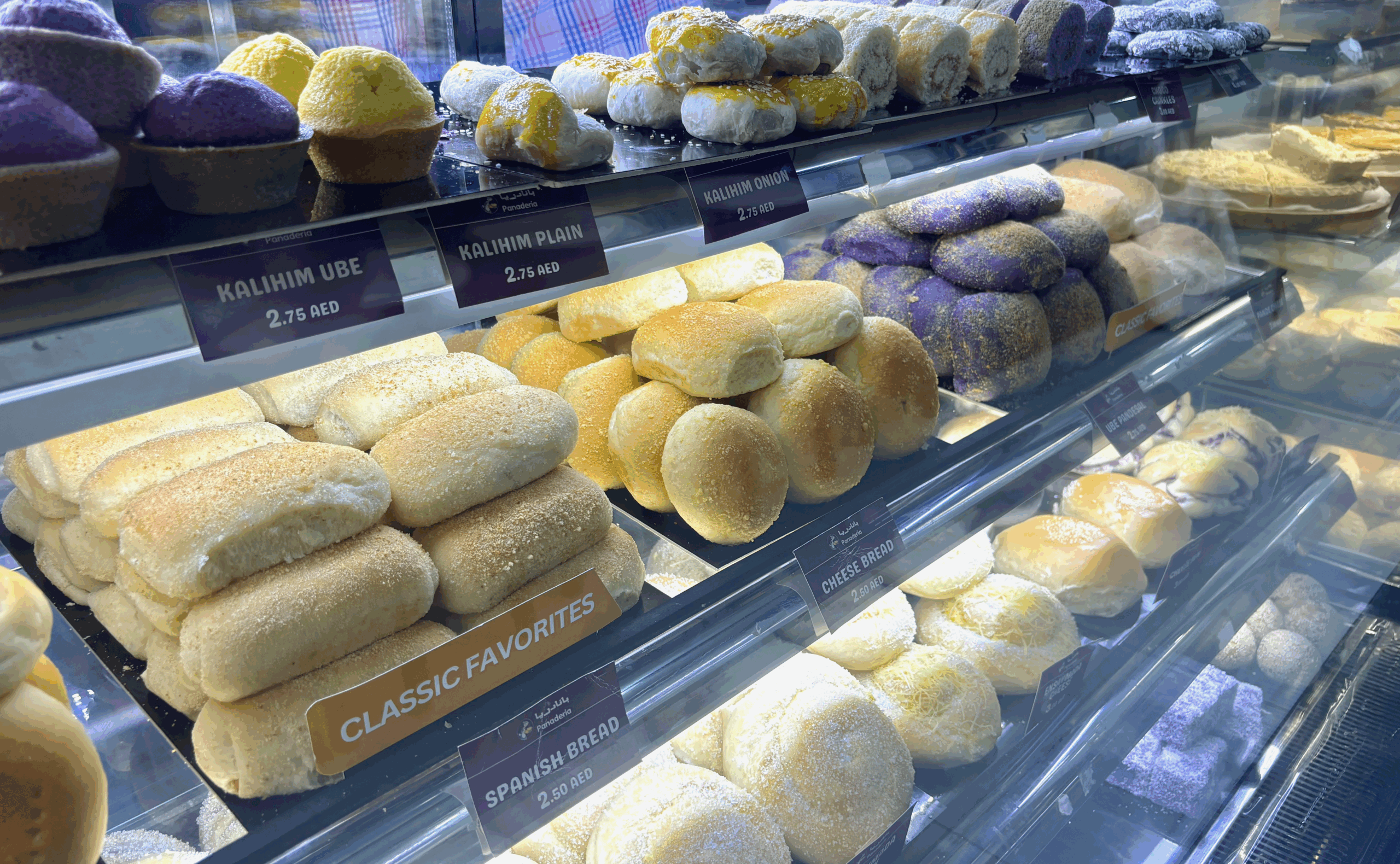
Panaderia. (Courtesy of Lauren McMillen)
While not serving Filipino cuisine in a traditional restaurant, Filipino nannies, who make up around 30% of the Filipino population in the UAE, introduce Filipino cuisine to the families who employ them. A nanny in Dubai, Cherry, told The National that, over six years with an Argentinian Brazilian family, she has introduced them to an array of Filipino dishes, with adobo, – a meat-based stew prepared with vinegar, soy sauce, and garlic – a school lunch box favorite.
One Carlo Diaz, a Filipino lifestyle writer for The National, wrote that Filipino cuisine “packs a complex history, which combines pre-colonial influences with centuries of foreign rule, from Spain to Japan.” Diaz echoed Doreen G.Fernandez’s 1985 article “Culture Ingested: Notes on the Indigenization of Philippine Food,” which explained how Filipino food is shaped by the Philippines’ history and society, composed of a “Malay matrix, into which melded and blended influences from China and India (through trade), Spain and America (through colonization), and more recently the rest of the world (through global cultural communication).” Fernandez continued that Filipino cuisine has changed through history, “absorbing influences, indigenizing, adjusting to new technology and tastes, and thus evolving.”
Panaderias: The UAE’s Quintessential Filipino Bakeries
Embodying the global and adaptive nature of Filipino cuisine are the UAE’s ubiquitous Filipino bakeries, known as panaderias. The largest chain of Filipino bakeries in the UAE, Panaderia, opened its first location in 2008 near the labor camp in Musaffah, the southeast region of Abu Dhabi, to cater to the many Filipinos living the camp. Jet, Panaderia’s marketing director, recalled: “The founder and owner of Panaderia, his dad was a baker. In the Philippines, he would be under the table sleeping while his dad was baking. When he came here, he got the idea to start a bakery.” When the labor camp moved further into the desert, the bakery relocated to Abu Dhabi city center, after which the single bakery bloomed into a recognized brand. Panaderiais distinguished by its vibrant purple logo featuring a grandmother offering freshly baked bread. Panaderia’s iconic purple sign fronts became a quintessential feature of the city, with 31 locations in the UAE by 2019 and growth only slowed by the coronavirus pandemic.
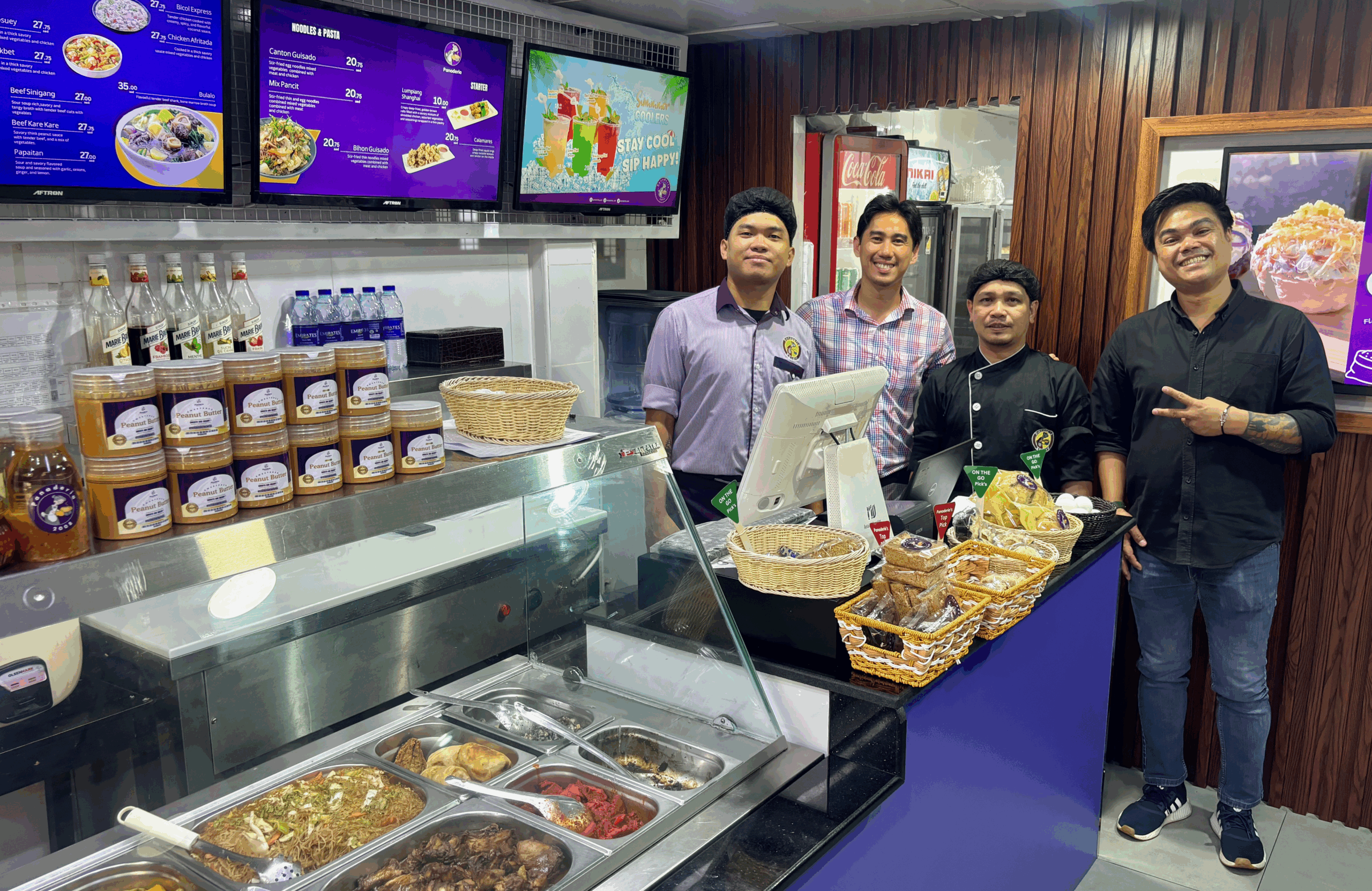
Panaderia. (Courtesy of Lauren McMillen)
Other Filipino panaderias are popping up across the country. “Our brand is registered as a copyright in the UAE, but panaderia is an open word for everyone, whether it’s Spanish or Latin American – it means bakery,” explained Jet. “There are panaderias in the Philippines but not specifically the word itself,” he said, noting that the word was chosen to cater to the diverse population and culture in the UAE.
Each panaderia sells signature baked goods as well as an array of Filipino dishes. This is another departure from the concept of a panaderia in the Philippines, adapting to the needs of Filipino migrants in the UAE. “In the Philippines, a panaderia serves only bread. Now, we put it all together – cafeteria style,” Jet explained. The menu includes popular Filipino dishes, including adobo, pancit, and sopas. Adobo, which is often considered the unofficial national dish of the Philippines, has Hispanic and Chinese influences. Pancit, which also has Chinese influences, is a noodle dish cooked with vegetables and meats or seafood. Sopas is a creamy chicken macaroni soup that is a common comfort food.
Despite the availability of these popular dishes, the pride of each Panaderia is its array of baked goods, such as pan de coco, a soft coconut-filled bun, and ensaymada, a fluffy pastry topped with sugar and cheese. Benedict, Panaderia’s operations director, emphasized that, while delicious, these sweet treats cannot compare to the importance in Filipino culture of pandesal, a soft yeasted bun with a crisp breadcrumb-coated crust. “Filipinos love to have this with their coffee or tea,” he said. He mentioned they sell it for “maybe 1 dirham for two pieces, so the price is achievable for everyone. It has its own signature: It’s a simple bread, soft inside and crusty outside.” To Benedict, pandesal is as iconic to Filipino culture as the croissant is to French culture. Alongside pandesal, however, another quintessential Filipino culinary addition is ube, a purple yam indigenous to the Philippines. “Sweets, ice cream, bread, anything that goes along with bread, a spread – we have it in ube,” noted Benedict. “It became one of our signature flavors in the Philippines and here.”
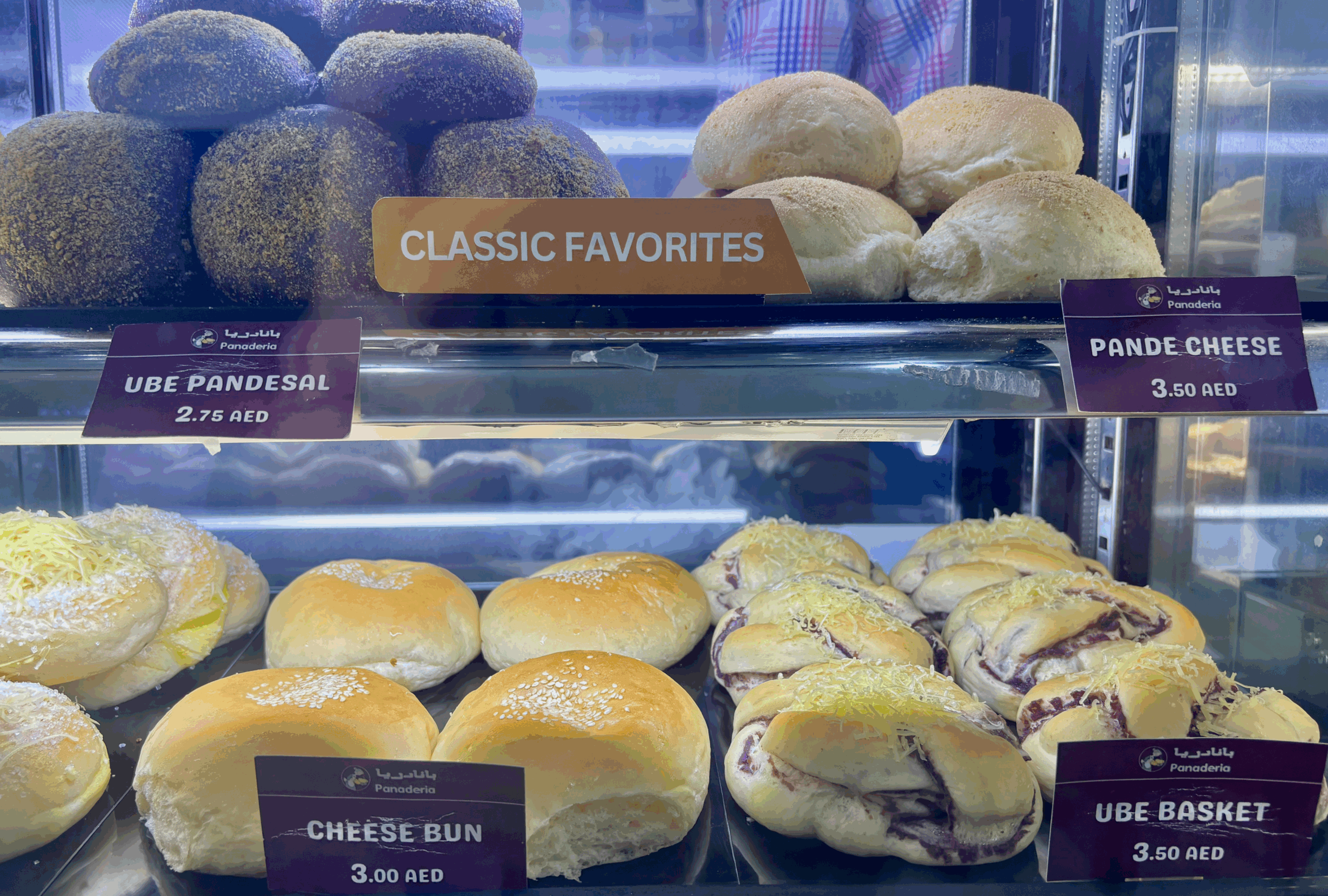
Panaderia. (Courtesy of Lauren McMillen)
Their goal, they said, is to make Panaderia an internationally recognized name and to introduce Filipino cuisine to a wider market. “Our goal is not only Filipino customers. Our goal is to introduce Filipino food to other nationalities,” said Jet. “Slowly, gradually, we are doing that. Now we see other nationalities trying our pandesal. It’s a start. I’m happy because I never thought it would appeal, but when they tried it, they loved it.” They have also started blending Filipino culinary traditions with the culinary traditions of other nationalities. “We started with Korean bread. Koreans, but also a lot of Filipinos and other nationalities, love it, so we made it.” They also have created a unique type of maamoul – a semolina cookie filled with nuts or dates that is traditional across the Middle East – that incorporates Filipino flavors and ingredients. “We also have maamoul with cheese, purple yam, or mocha inside,” Jet highlighted.
In bringing Filipino cuisine and flavors to life in the UAE, Jet and Benedict highlighted that the company has had to adapt to the UAE’s environment and regulations. For example, Panaderia offers a type of pandesal that contains leaves from the moringa tree. The tree is native to the Philippines and produces leaves rich in vitamins and iron. However, sourcing moringa in the UAE has proved challenging. “There are some supermarkets, but for bulk you have to import it,” he said. “It’s similar for coconut. For our pies, we would love to add a lot more coconut, but the sources are expensive. We have 30% less than we would normally add. In the Philippines, you can just have them on any of the trees around.” Furthermore, Jet and Benedict stressed that a key feature of Filipino panaderias is that you can “feel the aroma” of the freshly baked bread wafting out of the oven. “Here, in the UAE, because of safety standards, we cannot have exposed food; it has to be covered,” Benedict noted.
While they cannot reproduce the experience and goods precisely as they are prepared in the Philippines, panaderias offer a piece of home for the nearly 700,000 Filipinos who live and work in the UAE. “Personally, for me, my mother would always ask me to buy pandesal. So, when I came here, I didn’t know there was a panaderia,” said Benedict. “When you’re growing up, you’re looking for moments from when you were a kid. When you’re working in the UAE, you’re always cooking at home, but when I knew there was a panaderia selling pandesal, I thought it was 1 dirham, nice, worth the money. On the first bite, you’re going back to your hometown – that’s the feeling.”
“This is why we bring pandesal and other Filipino breads here. We want people who love pandesal to not miss that moment, those happy moments they have in the Philippines. We try to bring all the Filipino delicacies into our store, so they don’t feel homesick. If you go into a Filipino shop like this, you will feel you are in the Philippines, because your favorite breads, Filipino dishes, are here.”
The views represented herein are the author's or speaker's own and do not necessarily reflect the views of AGSI, its staff, or its board of directors.



